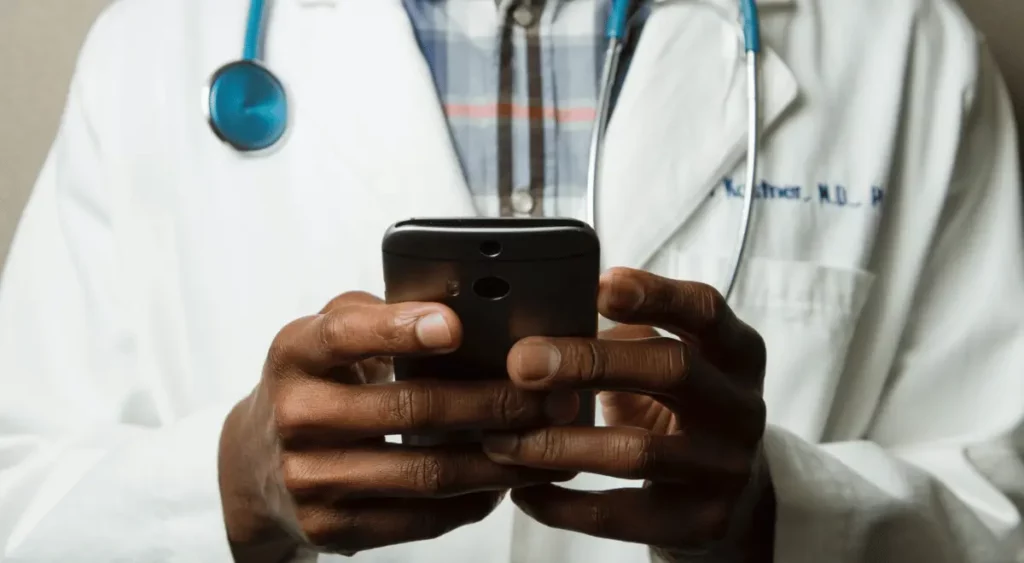Seven Ways To Take Care Of Patients Remotely With Digital Health Software

In the healthcare sector, technologies are evolving rapidly. Care professionals now have access to patient data thanks to software developed for virtual healthcare, which streamlines the entire diagnostic procedure.
Physicians who effectively manage patient data using healthcare software are better equipped to offer high-quality care with reduced costs and time. But why is healthcare software the answer to the issues patients and the care team face?
The article highlights all the essential ways that healthcare providers use to monitor patients remotely using digital health software.
Table of Contents
Toggle7 ways care providers can take care of patients with digital health software:
Healthcare facilities are developing a variety of healthcare software that integrates smoothly into current workflows. Soon, these trends should be considered when developing advanced virtual health monitoring systems.
The proper planning and execution of digital health applications will ensure the caliber of healthcare services, gain positive patient experience, and enhance treatment processes while lowering associated costs.
Below are the ways mentioned to use the healthcare platform to provide care to patients:
1. Task Management
The care team utilizes the software to provide patients with the proper care rather than investing more in administrative duties or filing paperwork. Automating the process enables healthcare providers to reduce time, save money and offer better assistance to enhance their healthcare outcomes.
2. EHR Integration
Physicians digitally collect the patient’s health-related data through the EHR (Electronic Health Record) system, which includes the patients’ administrative and clinical data, such as medications, allergies, medical insurance, and demographics.
3. Managing multiple chronic conditions simultaneously
Clinicians remotely monitor patients suffering from two or more chronic conditions like diabetes and hypertension. The digital health application helps to respond promptly when the patient’s data shows they need treatment by their care providers.
4. Seamless care
Digital health software for patient care helps healthcare facilities manage several operations, including communication, enhanced diagnostics, and higher-quality medical care.
5. Easy scheduling
Patients schedule appointments efficiently from their comfort zones. With the help of the patient care platform, physicians send appointment reminders and follow-up emails to stay connected with the patients. Healthcare software lifts the burden off the care teams from online scheduling to easy billing.
6. Interaction capabilities
With the use of digital health softwares, clinical providers and patients can communicate via audio/video calls, in-App messaging, SMS, and more.
7. Generate referrals
Patients with a positive experience with your healthcare facility will most likely refer your care facility to their family and friends. Digital health software tracks the patient’s referral to know their feedback.
Ensure a good care treatment for your patient with the healthcare platform from HealthArc
With HealthArc’s care platform, enhance your patient health outcomes. Through chronic pain management and remote patient monitoring services, the platform assists in tracking the patient’s health. The patient’s medical information is gathered to keep track of their health with predetermined standards. The platform aids healthcare professionals in adhering to the proper procedures.
Conclusion
Although there are laws to protect privacy, such as HIPAA, in the US, regulations are still needed for other healthcare issues. With significant benefits for both the care team and patients, digital technologies have the potential to transform the healthcare industry completely.
Also, read more about the latest remote patient monitoring CPT code by CMS.
Most recent blogs
Categories
- Behavioral Health Integration
- Cellular Remote Patient Monitoring
- Chronic Care Management
- Chronic Care Management Billing
- Chronic Care Management CPT Codes
- Chronic Care Management Program
- Chronic Care Management Software
- Digital Health Platform
- Principal Care Management
- Principal Care Management CPT Codes
- Remote Monitoring Devices
- Remote Patient Care
- Remote Patient Monitoring
- Remote Patient Monitoring Billing
- Remote Patient Monitoring CPT Codes
- Remote Patient Monitoring Devices
- Remote Patient Software
- Remote Therapeutic Monitoring
- Remote Therapeutic Monitoring Billing
- Remote Therapeutic Monitoring CPT Codes
- Telemedicine & RPM
- Transitional Care Management
- Transitional Care Management Billing
- Transitional Care Management CPT Codes
Related Posts
- November 18, 2021 | Read Time: 4 mins




